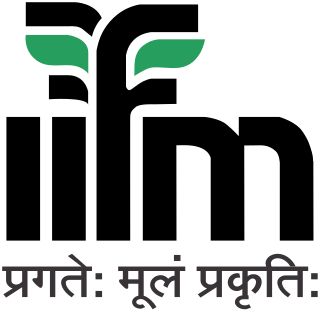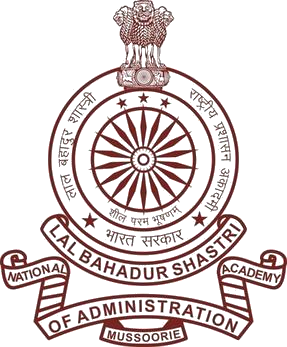
The Indian Police Service is a civil service under the All India Services. It replaced the Indian Imperial Police in 1948, a year after India became independent from the British Empire.

The Indian Administrative Service (IAS) is the administrative arm of the All India Services of Government of India. The IAS is one of the three All India Services along with the Indian Police Service and Indian Forest Service. Members of these three services serve the Government of India as well as the individual states. IAS officers are also deployed to various government establishments such as constitutional bodies, staff and line agencies, auxiliary bodies, public sector undertakings, regulatory bodies, statutory bodies and autonomous bodies.

The district magistrate, also known as the district collector or deputy commissioner, is a career civil servant who serves as the executive head of a district's administration in India. The specific name depends on the state or union territory. Each of these posts has distinct responsibilities, and an officer can assume all of these roles at once. The district magistrate is primarily responsible for maintaining law and order, while the district collector focuses on land revenue administration, and the deputy commissioner is in charge of overseeing developmental activities and coordinates government departments. Additionally, they also serve as election officers, registrar, marriage officer, licensing authority, and managing disaster responses, among other things. While the specific scope of duties may vary from state to state, they are generally similar. The district magistrate comes under the general supervision of divisional commissioner.
The All India Services (AIS) comprises three Civil Services of India common to the centre and state governments, which includes the Indian Administrative Service (IAS), the Indian Police Service (IPS), and the Indian Forest Service (IFS). Civil servants recruited through All India Services by the central government are assigned to different state government cadres. Some civil servants may, later in their career, also serve the centre on deputation. Officers of these three services comply to the All India Services Rules relating to pay, conduct, leave, various allowances etc.

The Indian Forest Service (IFS) is the premier forest service of India. .The IFS is one of the three All India Services along with the Indian Administrative Service(IAS) & the Indian Police Service(IPS). It was constituted in the year 1966 under the All India Services Act, 1951.
The Home Guard of India is a volunteer force tasked to be an auxiliary to the Indian Police Service (IPS). The Home Guards Organisation was reorganised in India in 1966 after the Sino-Indian War with the People's Republic of China, though it existed in smaller units individually in some places. Home Guards are recruited from various cross sections of the civil society such as professionals, college students, agricultural and industrial workers etc. who give their spare time for betterment of the community. All citizens of India, in the age group of 18–50, are eligible. Normal tenure of membership in Home Guards is three to five years.

The Indian Institute of Forest Management (IIFM), founded 1982, is an autonomous, Natural Resource Service training institute of Forestry located in Bhopal, Madhya Pradesh, India, established by the MoEFCC, Government of India with financial assistance from the SIDA and course assistance from the IIM Ahmedabad for mid career training of IFS cadre and all State Forest Service cadre in India. The institute's objective is to fulfill the growing need for the managerial human resource in the area of Forest, Environment, and Natural resources Management and allied sectors. The institute is headed by a director selected and appointed by the Ministry of Environment, Forest and Climate Change, Government of India.

National Crime Records Bureau (NCRB) is an Indian government agency responsible for collecting and analyzing crime data as defined by the Indian Penal Code (IPC) and Special and Local Laws (SLL). NCRB is headquartered in New Delhi and is part of the Ministry of Home Affairs (MHA) under the Government of India. Vivek Gogia (IPS) is the current Director of the National Crime Record Bureau.

The National Academy of Indian Railways (NAIR), Vadodara formerly Railway Staff College and historically the Pratap Vilas Palace, is a Centralised civil service, engineering and medical training institute for Civil Service, Engineering and Medical Officers of Indian Railway Personnel Service, Indian Railway Stores Service and Indian Railway Medical Services cadre headed by a Director General and staffed by a faculty of experienced Railway Managers and Experts. Starting with the initial training of Officers Trainees inducted as Central Civil Services, Engineering and Medical professionals that form the backbone of Indian Railways, the Academy also conducts, mid-service mandatory or theme based in service Management Courses for all Officers of IR and courses for Officers of other Group A Central Services, Public Sector and Foreign Railways. The Academy is housed in the sprawling 55 acres campus of the Pratap Vilas Palace at Lalbaug, Vadodara.

Lal Bahadur Shastri National Academy of Administration (LBSNAA) is a civil service training institute on public policy and public administration in Mussoorie, Uttarakhand in India. The academy's main purpose is to train civil servants of the IAS cadre and also conduct the Foundation Course of Group-A Central Civil Services. After completion of training, the trainee officers of IAS cadre are awarded an MA from Jawaharlal Nehru University. It has been functioning under the Ministry of Personnel, Public Grievances and Pensions since 1985.

The Ministry of Home Affairs, or simply the Home Ministry, is a ministry of the Government of India. It is mainly responsible for the maintenance of internal security and domestic policy. It is headed by the minister of home affairs.

Balmiki Prasad Singh was the 14th Governor of Sikkim, India. He is a retired IAS officer and has written books and articles relating to Indian culture, in particular the culture of North-East India. Among his prominent books are Bahudha and the post 9/11 World and The problem of change: a study of North East India.
The Central Public Works Department is a department under the Ministry of Housing and Urban Affairs of India and is in charge of public sector works. It serves as the builder, developer and manager of Central government properties. With time, its area of operations has also expanded to roadways and Bridge engineering.
The Indian Telecommunication Service, widely known as ITS, and earlier known as Telegraph Engineering Service Class I is one of the Central Civil Services under Group 'A' of the executive branch of the Government of India. The appointment to this service is done through Combined Engineering Services Exam held every year by Union Public Service Commission (UPSC) of India. The service was created to meet the techno managerial needs of the government in areas related to telecommunications. The Department of Telecommunications (DoT) had been managed for years by the officers of this permanent cadre, called the Indian Telecommunications Service (ITS). The officers of ITS work under restrictions and rules of Central Civil Services (Conduct) rules.

The Bureau of Police Research and Development (BPR&D) was set up on the 28 August 1970 to further the objectives of the Government of India regarding the modernisation of police forces. It has since evolved into a multifaceted consultancy organisation. At present it has 4 divisions – Research, Development, Training and Correctional Administration.

Sardar Vallabhbhai Patel National Police Academy (SVPNPA) is the civil service training institution in India. The institute trains Indian Police Service (IPS) officers before they are sent to their respective state cadres to carry out their duties. The academy is in Shivrampalli, Hyderabad, Telangana, India.
In India, the Civil Service is the collection of civil servants of the government who constitute the permanent executive branch of the country. This includes servants in the All India Services, the Central Civil Services, and various State Civil Services.
The Indian Ordnance Factories Service (IOFS) is a civil service of the Government of India. IOFS officers are Gazetted defence-civilian officers under the Ministry of Defence. They are responsible for the administration of the Indian Ordnance Factories, which provide the indigenous defence production capabilities of India.

Indian Defence Accounts Service (IDAS) is a Central Group 'A' Civil Service of the Republic of India established to provide Financial Advice, Payment, Accounts and Audit services to the Defence Services i.e. Indian Armed Forces and other allied organisations viz. Defence Public Sector Undertakings, Military Engineer Services, Border Roads Organisation, Defence Research and Development Organisation etc.












